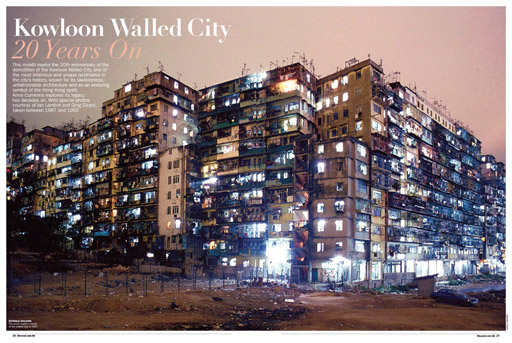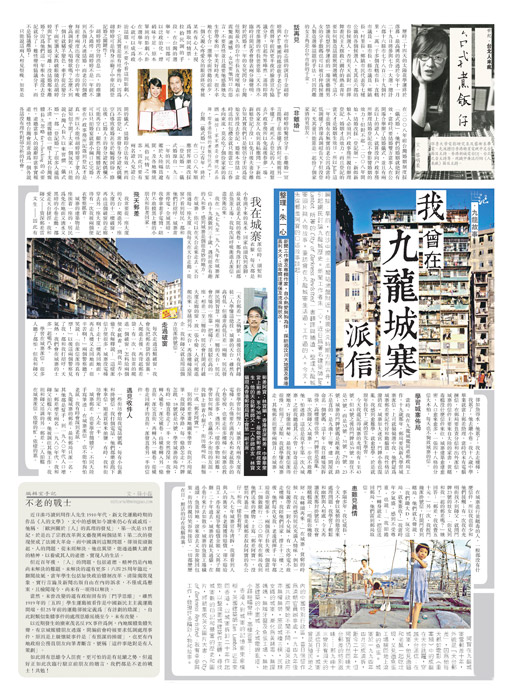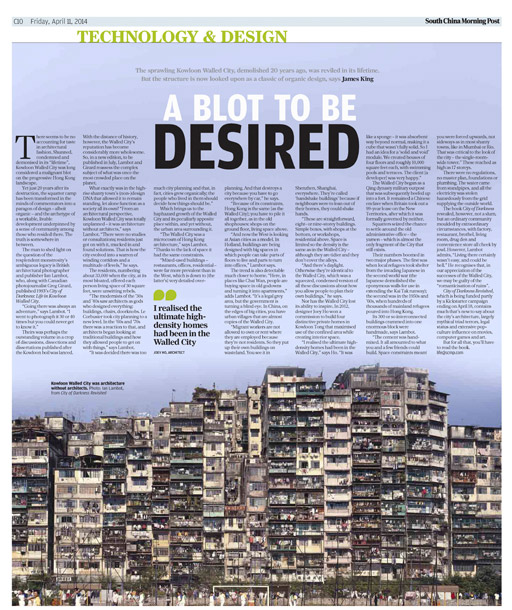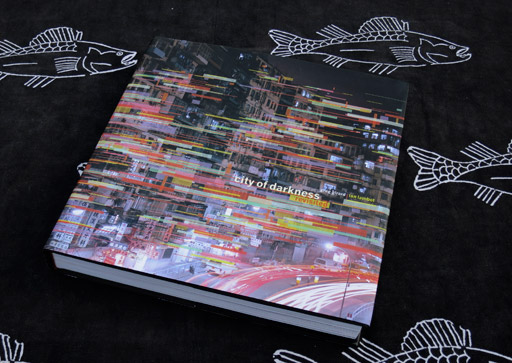THE BOOK REVIEWED

We were fortunate throughout the book’s production, and especially during the Kickstarter campaign, to receive a good deal of media coverage, either in print or via internet editions and programmes. In the latter camp, the Asia Wall Street Journal was helpful, while coverage on CNN provided the Kickstarter campaign with a huge boost, for which both Greg and I are eternally grateful.
The internet, of course, was essential in providing the much needed international exposure, but it was primarily the print media that helped spread the word in Hong Kong and around the region. Shown here are cuttings from the South China Morning Post, Time Out Hong Kong and the Ming Pao newspaper, but there were also articles in several other magazines



Now the book has been published, the emphasis is shifting towards reviews. It is always a bit of a lottery for us smaller publishers whether we will make the cut when it comes to getting a review in one of the more prestigious magazines, so we are especially grateful to Mark Clifford who has produced, for the Asian Review of Books, this first review of City of Darkness Revisited. Mark is the author of the forthcoming The Greening of Asia (Columbia University Press, 2015) as well as the executive director of the Asia Business Council. Our thanks to Mark, whose review we include here in full.
“When it heaved with life, the Kowloon Walled City was notorious. The enclave, protected by a historical quirk from British rule in Hong Kong, embodied a tangle of fears in the collective consciousness – it was a place of opium and whoredom, lawlessness and murder. It epitomised crime and overcrowding, triads amidst the tenements, chaos in the midst of civilisation.
Two decades after its destruction, the Walled City has acquired an increasingly shiny gloss of respectability. Architects of the new urbanism celebrate its dense, human, organic development. The government’s dystopian view of the Walled City as a place of “notorious… drug divans, criminal hide-outs, vice dens and even [sic] cheap unlicensed dentists,” has given way to a vision of the Walled City in the collective imagination as the lost paradise, a sort of Atlantis, Xanadu and urban Shangri-La rolled into one.
Symbolising this re-imagined city, and helping make the gloss even shinier, is a new and dramatically expanded twentieth-anniversary edition of City of Darkness. In its earlier editions, the book was something of a cult classic. It was also a book that focused very much on the people of the City, trying to de-mystify and humanise this place of urban myth.
The new edition is big and bold, a colourful heavyweight book perfectly suited for gift-giving and coffee-table viewing by people who never would have gone to the City while it was real. But it is also a far more ambitious attempt to look at the underside of the city and at its larger global and urban-architectural dimensions.
The sometimes tight, cramped look of the original has been replaced by larger photos. A number of new essays bring more depth and richness to the book. Fionnuala McHugh’s essay on the politics of the Walled City clearance sheds light on a secretive chapter in Sino-British relations that until now has remained untold. There is also additional material on the unique architecture and the global influence that the Walled City has come to exercise, especially in the years since it was torn down.
The density of the 14-storey Walled City was unequalled anywhere: if Manhattan were built to the same density it would be home, not to 1.6 million people, but to 65 million. Most informal settlements spread out, but the Walled City was forced to go up, limited to the footprint outlined by the grounds of a former Chinese military compound that was, as the result of a historical quirk, not subject to formal British rule. As recently as the 1960s, pig pens and garden plots had been a feature of the settlement, but the city’s growth and its hunger for space – space for living, for working, for praying, for eating – saw the City caught up in the race to build Hong Kong. The City only topped out when the government forced the demolition of the top storeys of a building that breached the 150-foot height limit imposed because of the proximity to Kai Tak Airport.
This lavishly-illustrated book centres on Greg Girard’s [and Ian Lambot’s] striking photos. But the volume ranges broadly over the past 150 years. A detailed 1865 photo of the old fort, surrounded by hills and rice paddies, and a number of other striking historical photos trace the City’s development.
A summary history details the repeated thwarting of British attempts to impose state control on the 0.01 square-mile home to 35,000 people. In pragmatic accommodation to reality, electricity, postal and water service were all provided, despite the lack of formal legal jurisdiction. This was a space that existed in a permanent state of ambiguity and yet had to deal with the reality of two tonnes of garbage a day, all of which adds richness to interesting vignettes by, among many others, a postman and a China Light & Power engineer who discuss the daily reality of working in the Walled City.
The Walled City’s state of organic anarchism was summed up by author William Gibson: “[T]here was no law there. An outlaw place. And more and more people crowded in; they built it up, higher. No rules, just building, just people living. Police wouldn’t go there. Drugs and whores and gambling. But people living, too. Factories, restaurants. A city.” This is a fascinating, rich book. It is one that can be casually flipped through but it is, above all, a rich and deep work that benefits from repeated reading.
Anyone who loves Hong Kong’s grittiness will enjoy this book, for it is all here. The triads and the illegal dentists, the cops and the junkies, the racing-pigeon breeder and the noodle-maker, the mah-jong players and the metal-working factories. As Ian Lambot writes of the original impetus behind the project that he and Greg Girard first conceived of more than 20 years ago: “[I]n a way, the City stood as a microcosm of Hong Kong – just ordinary people trying to get by in the best way they could.”
Few books capture ordinary people in an extraordinary city as richly and lovingly as does City of Darkness Revisited.”
